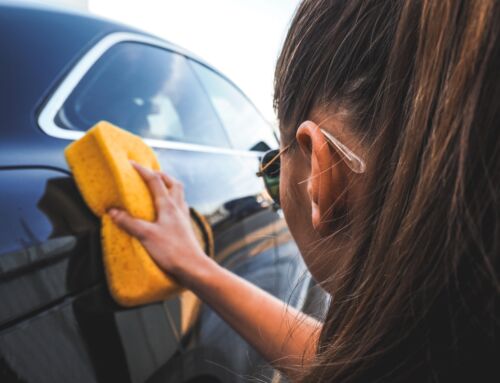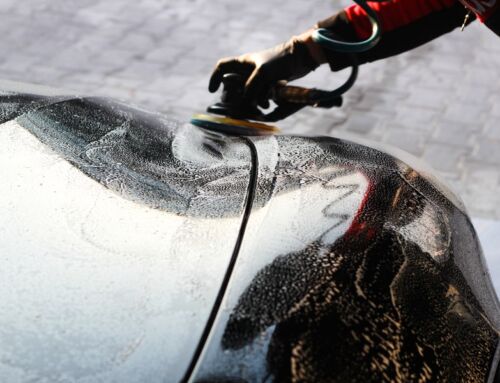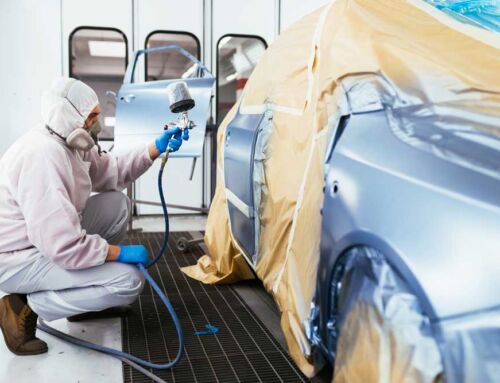Updated: 10/19/2024
Dealing with a car accident can be overwhelming, but understanding your rights to repair your vehicle after the incident is crucial. Whether it’s choosing a certified auto body shop, working with your insurance, or deciding between OEM and aftermarket parts, this article will walk you through the key steps you need to take after a collision. The aim is to give you clarity on how to ensure quality repairs while avoiding common pitfalls.
| Topic | Key Points |
|---|---|
| Your Rights After a Car Accident | Understanding insurance, collision repair options, and certified technicians |
| Choosing the Right Auto Body Shop | The importance of certifications like I-CAR Gold Class and ensuring high-quality repairs |
| OEM vs. Aftermarket Parts | The difference between Original Equipment Manufacturer (OEM) parts and aftermarket auto parts |
| Ensuring Proper Insurance Coverage | How to work with your insurance company to cover the repair process |
| Conclusion & Call to Action | Recap of your rights and how Downtown Autobody can assist you |
You have the right to choose the auto body shop that meets your needs, ensuring that your vehicle gets the best care possible.
Understanding Your Rights After a Car Accident
When involved in a car accident, the first step is to understand your rights when it comes to getting your vehicle repaired. Many people don’t realize that they have the option to choose their own auto body shop, regardless of what their insurance may suggest. It’s important to know that you aren’t limited to the shops your insurance company recommends. Instead, you can opt for certified collision centers that guarantee higher-quality repairs.
Choosing a shop that employs I-CAR Gold Class certified auto body technicians, like Downtown Autobody, is essential to ensuring your vehicle is restored to pre-accident condition. These technicians undergo rigorous training, making them more adept at handling modern vehicle structures, from collision repair to intricate welding.
Here are some key factors to consider:
- Look for shops with OEM auto parts to ensure your vehicle retains its original performance and safety features.
- Make sure the shop uses advanced tools like auto paint booths and high-quality auto paint clear coats for long-lasting finishes.
- Ask for an auto body estimate before approving repairs to avoid surprise costs.
Having a clear understanding of your rights and making informed decisions will help protect the value of your vehicle. In the next section, we’ll discuss how to choose the right auto body shop to ensure your car gets the best care.
Choosing the Right Auto Body Shop
Selecting the right auto body shop can be a game-changer in terms of the quality of repairs and the overall experience you have after an accident. Not all shops are equal, and certification matters when it comes to the quality of workmanship. The I-CAR Gold Class certification is one of the highest standards in the industry, signifying that the technicians are trained to the latest standards in vehicle repair and collision repair technologies.
A shop like Downtown Autobody not only has this certification but also offers unique facilities like an 80-foot auto paint booth designed to accommodate larger vehicles such as RVs, buses, and trucks. This facility ensures that every part of your vehicle is properly repaired and painted, even in hard-to-reach areas.
Some additional considerations include:
- Shops that offer loaner vehicles free of charge, like Downtown Autobody, making the repair process more convenient.
- Repair facilities equipped for advanced services such as frame repair, panel replacement, and dent repair, ensuring comprehensive care for your car.
- The use of specialized materials, such as auto body putty, auto corrosion protection, and auto body plastic filler, guarantees lasting results.
By ensuring that your chosen shop has these features and services, you can have peace of mind knowing your vehicle will be returned to you in top condition. Now, let’s delve into the important decision of choosing between OEM and aftermarket parts.
OEM vs. Aftermarket Parts: What’s the Difference?
One of the most critical decisions you’ll face during the repair process is choosing between OEM (Original Equipment Manufacturer) parts and aftermarket auto parts. The difference between the two can significantly impact both the performance and longevity of your vehicle.
OEM parts are made by the manufacturer of your vehicle and are designed to fit perfectly with no adjustments required. These parts are more reliable, especially when it comes to maintaining your vehicle’s safety features after a collision. Many collision centers recommend using OEM parts, particularly for newer vehicles or cars with complex safety systems.
On the other hand, aftermarket auto parts are made by third-party manufacturers and can sometimes be less expensive. However, they may not always provide the same quality or fit as OEM parts, potentially affecting your vehicle’s performance over time.
In some cases, your insurance policy might only cover the cost of aftermarket parts unless you specifically request OEM. Always check with your insurer about what they will cover, and consider asking your shop for recommendations based on your car’s needs.
- OEM parts: High quality, perfect fit, best for maintaining safety.
- Aftermarket parts: Less expensive, but may require adjustments and offer lower reliability.
- Work with your insurance company to get the best possible coverage.
By understanding the pros and cons of OEM vs. aftermarket parts, you can make the best decision for your car. Now, let’s talk about working with your insurance company to ensure they cover your repair costs adequately.
Ensuring Proper Insurance Coverage
Dealing with insurance claims after a car accident can be confusing, but it’s essential to know how to work with your insurance company to ensure they cover the repair costs. Most collision insurance policies should cover the bulk of repair costs, but it’s vital to read the fine print and know what you’re entitled to.
Some tips for navigating the insurance process:
- File a collision insurance claim as soon as possible to avoid delays in the repair process.
- Ask your insurance provider about your rights to select an auto body shop and the parts used in the repair, whether OEM or aftermarket.
- Ensure that your insurance covers not only the collision repairs but also any additional services like car rust repair, auto scratch repair, and auto corrosion protection.
At Downtown Autobody, we make the process easier by working directly with your insurance company to streamline the repair process, ensuring you get the best possible outcome.
Final Thoughts
After a car accident, knowing your rights and making informed decisions is key to ensuring your vehicle is repaired properly. From selecting the right auto body shop to understanding the difference between OEM and aftermarket parts, taking these steps will help protect your vehicle’s value and your safety.
If you have any questions about your rights to repair, don’t hesitate to contact Downtown Autobody for expert advice. Remember, we also offer free loaner cars to make your repair process as smooth as possible. Learn more about our loaner vehicles here.





